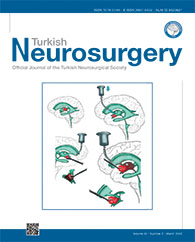2Eulji University Eulji Hospital, Department of Neurosurgery, Seoul, Korea
3Biotechnology Research Institute, Hurim BioCell Inc., Seoul, Korea
4University of California, Department of Neurological Surgery, Davis, Sacramento, California, USA DOI : 10.5137/1019-5149.JTN.33739-21.4 AIM: To evaluate the efficacy of human adipose-derived stem cells (h-ADSCs) in spinal fusion in an osteoporotic rat model.
MATERIAL and METHODS: Female Sprague-Dawley rats (n=40) underwent ovariectomy and were then randomly assigned into two groups: ovariectomy (OVX) (OVX + fusion) and h-ADSCs (OVX + fusion + h-ADSCs). Six weeks after OVX, we performed bilateral lumbar spinal fusion using the autologous iliac bone with or without administration of h-ADSCs. The efficacy of the spinal fusion was then assessed using manual palpation, lateral ending, morphogenic examinations, and histology six weeks the after fusion procedure.
RESULTS: Fusion bed volume was different between the two groups but not significantly. However, the fusion bed density was higher in the h-ADSC group than in the OVX group. Manual palpation (70% vs. 40%, p=0.112) and lateral bending (95% vs. 55%, p=0.011) produced higher fusion rates in the h-ADSC group than in the OVX group. Additionally, a histologic examination revealed new bone formation at the fusion bed between the lamina and implanted iliac crest bone in the h-ADSC group, whereas, in the OVX group, the fusion masses were composed of fibroblastic proliferation.
CONCLUSION: Our study demonstrates that the administration of h-ADSCs may have advantages in bone formation and consolidation but does not lead to bone overgrowth. These findings indicate that the administration of h-ADSCs is an alternative and efficient method for spinal fusion.
Keywords : Adipose-derived stem cell, Spinal fusion, Osteoporosis, Ovariectomy




